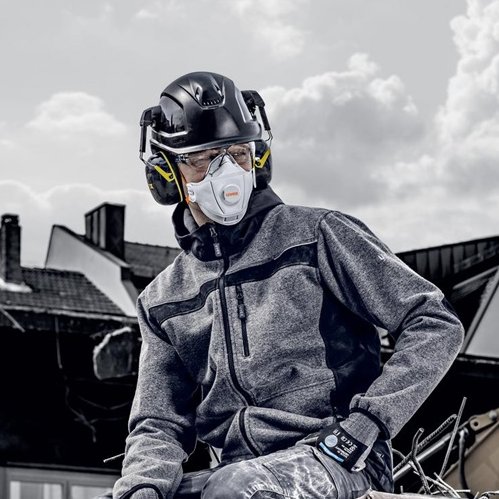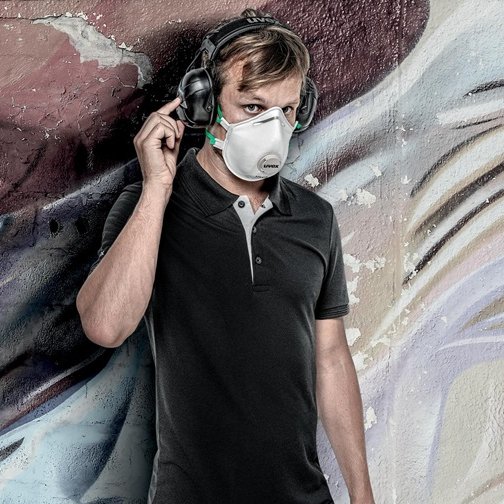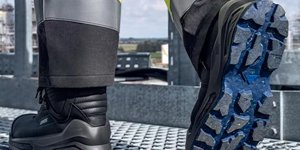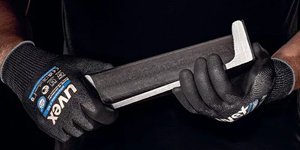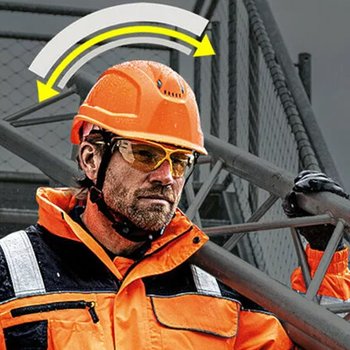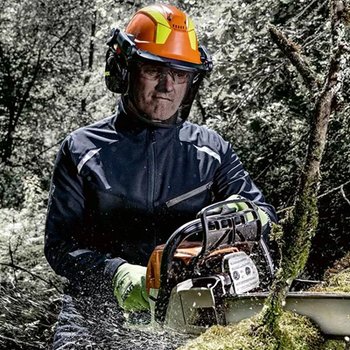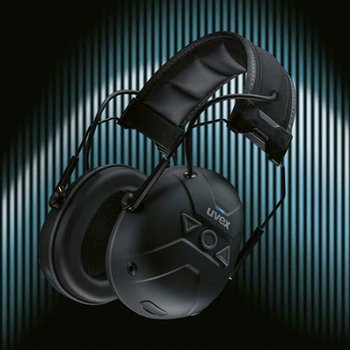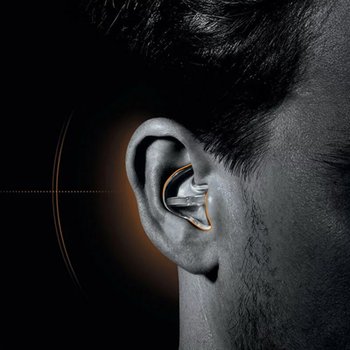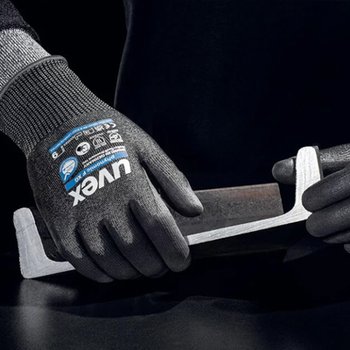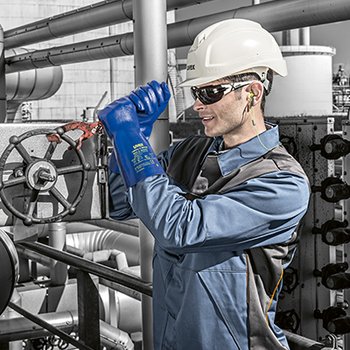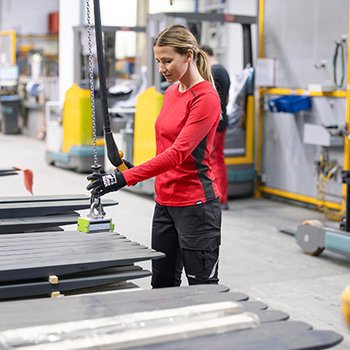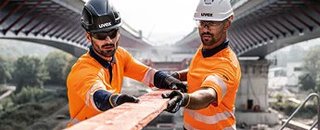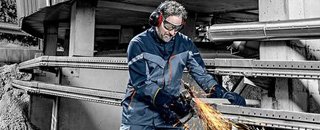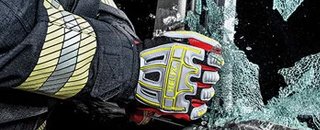
Worth knowing about respiratory protection
Respiratory protection refers to all PPE which protects its wearer or user against poisonous substances and environmental contaminants.
It is primarily used in the field of industrial health and safety. Respirators can be classified either as filtering or isolating respirators.
While filtering respirators filter out any hazardous substances in the surrounding air, isolating respirators are self-contained breathing apparatus (SCBA) which supply the wearer with oxygen.
Please be aware that a detailed assessment of the workplace and hazardous substances must be carried out before selecting and using the correct type of respiratory protection. No decisions should be made purely on the basis of information provided here. Relevant laws and regulations must also be taken into account.

What protection classes do respiratory protection masks have?
The three protection classes as defined by EN 149 distinguish between the quantity of the filtered particles rather than their size.
FFP1 respirators filter out at least 80% of particles, while FFP2 respirators filter out 94% and FFP3 filters 99,95%. The more particles that need to be filtered, the more filter material layers are required. For this reason, masks in the higher protection classes are thicker, which results in higher breathing resistance.
In order to reduce the breathing resistance of FFP2 and FFP3 masks, uvex has developed the unique High Performance masks, which offer lower breathing resistance and ensure improved temperature regulation.
FFP1 respirators
FFP2 respirators
FFP3 respirators
How do respirators actually work?
Aerosols and fine dust particles are among the most serious health risks in some working environments – not to mention that they are almost impossible to see in the air we breathe. In a best-case scenario, employees may have to put up with unpleasant smells, but in the most dangerous cases carcinogenic or even radioactive particles may be present. Others could cause chronic respiratory problems over decades, ultimately leading to serious illness. Respirators protect the wearer against liquid and oil-based aerosols, smoke and dust in working environments. Their protective function in Europe is standardised in accordance with EN 149, under which respirators are divided into three protection classes: FFP1, FFP2, and FFP3. They are described as either particle-filtering half masks or fine dust respirators.
How are the particles filtered?
Particle-filtering respirators solely protect against particles, not gases or vapours. They generally consist of several layers of filter material and may optionally include an exhalation valve. The different layers, which are clearly visible in the adjacent illustration, serve different purposes, such as look and feel, stability, tear strength — and of course filtering. One of the key factors for comfort is breathing resistance (i.e. the resistance felt when inhaling and exhaling which ultimately places a strain on the wearer). To keep this low, the filter material needs to be permeable to air, while also filtering out particles. For this reason, the filter material has an electrostatic charge. This serves to ensure that small particles which could theoretically permeate the filter instead cling to the material.
This can be most easily explained by imagining a balloon and ground pepper: an inflated balloon is loaded with an electrostatic charge when it is rubbed on a piece of fabric. If this balloon is then held close to the pepper, the balloon attracts the fine pepper particles from a distance of several centimetres. This same effect applies in the respirator, ensuring that air passes through while particles are trapped by the material.
What is the difference between the protection classes?
The three protection classes distinguish between the quantity of the filtered particles rather than their size. FFP1 respirators filter out at least 80% of particles, while FFP2 respirators filter out 94% and FFP3 filters 99.95%. The more particles that need to be filtered, the more filter material layers are required. For this reason, masks in the higher protection classes are thicker, which results in higher breathing resistance.
In order to further reduce the breathing resistance of FFP2 and FFP3 masks, uvex has developed of the unique High Performance masks, which offer lower breathing resistance and ensure improved temperature regulation.
Not all questions answered yet?
Find out more about uvex respiratory protection.
